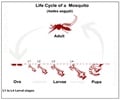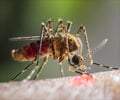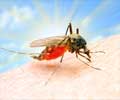
‘Loss of peroxisomes results in the loss of the ability of the cells to produce an interferon that inhibits replication of viruses. This finding could open new avenues to treat or prevent diseases caused by West Nile virus and Dengue virus infections.’
Tweet it Now
Tom Hobman, senior author and professor of cell biology, said, "Peroxisomes, as it turns out, are required for production of an antiviral molecule called interferon lambda. Interferon lambda is produced by infected cells and has been shown to inhibit replication of multiple viruses. We hypothesized that loss of peroxisomes results in the loss of the ability of the cells to produce this interferon, which indeed was found to be the case. It looks like the virus may be targeting peroxisomes to prevent antiviral defense by the cell." The study found that in infected cells, about 35% of the peroxisomes had disappeared. Production of interferon was also down by approximately 80%. Richard Rachubinski, a study co-author and one of the world's leading authorities on peroxisomes, said, "While the team set out to find how viruses manipulate host cells, the link to peroxisomes was completely unexpected. You can't plan this. You just cannot. It goes to show the unexpected avenues one finds in discovery research that you'd never anticipate."
According to the researchers, this latest work may now open new possibilities for intervention in flavivirus infection.
Hobman said, "It's certainly within the realm of possibility that if peroxisomes play this key role in antiviral defense, it may be possible to take drugs that are known to boost peroxisome production to provide protection against the viruses."
The researchers think it likely that other viruses may also target peroxisomes in a similar manner to flaviviruses. They hope to now show it through new studies which are currently underway.
Advertisement
Source-Eurekalert














